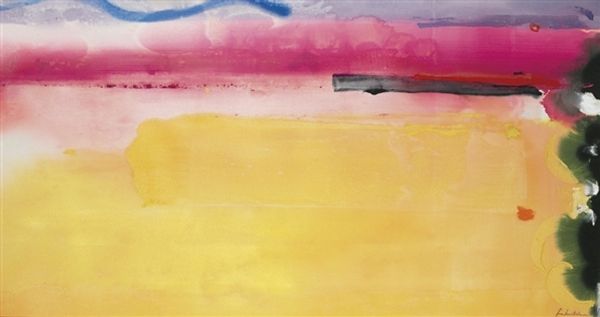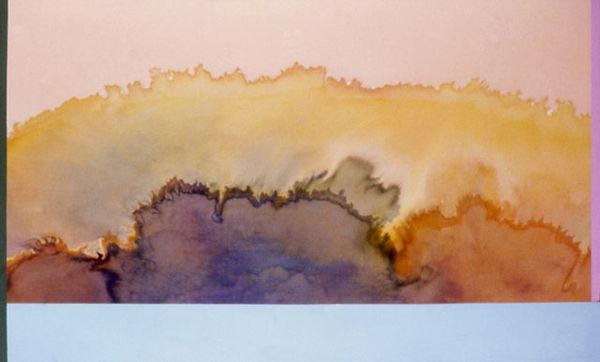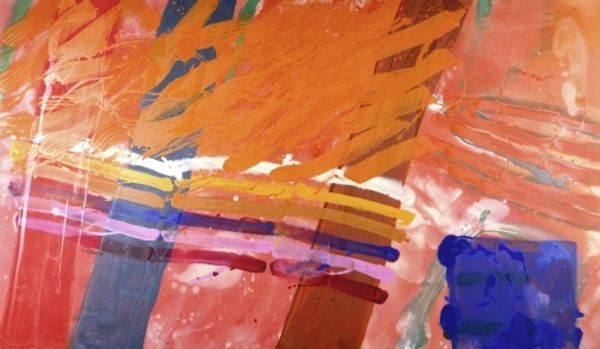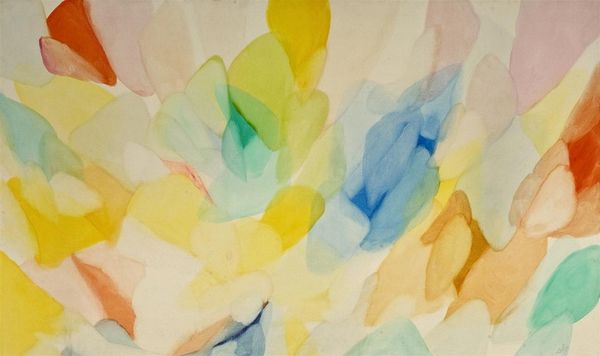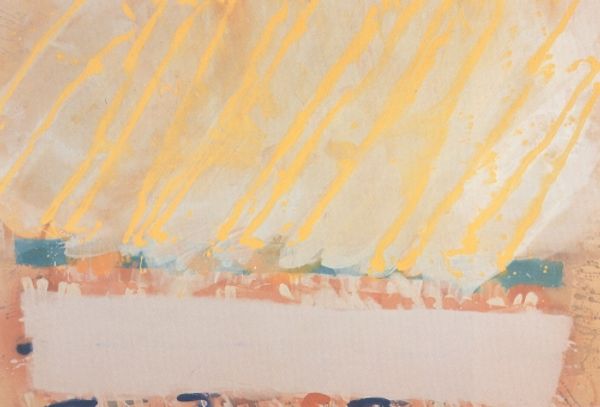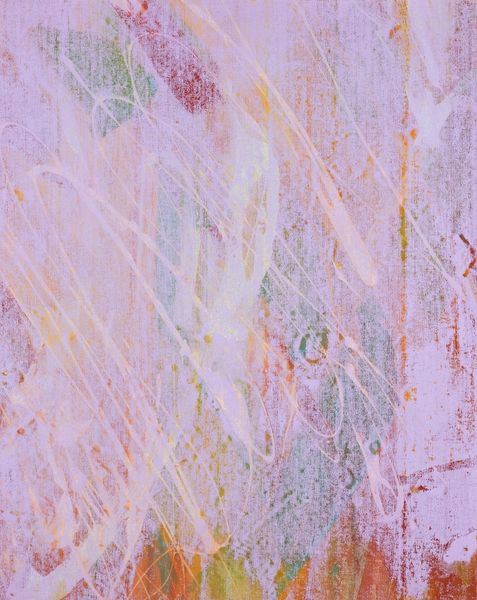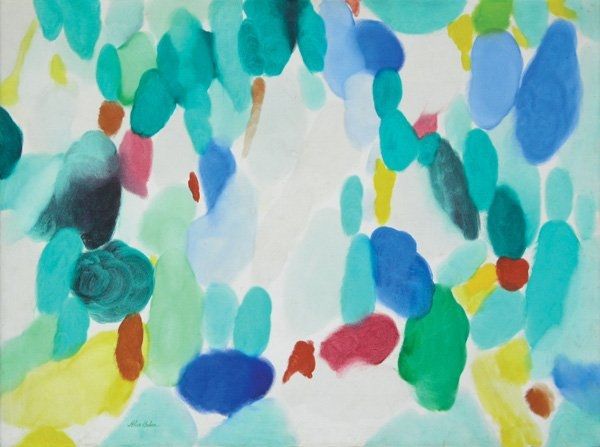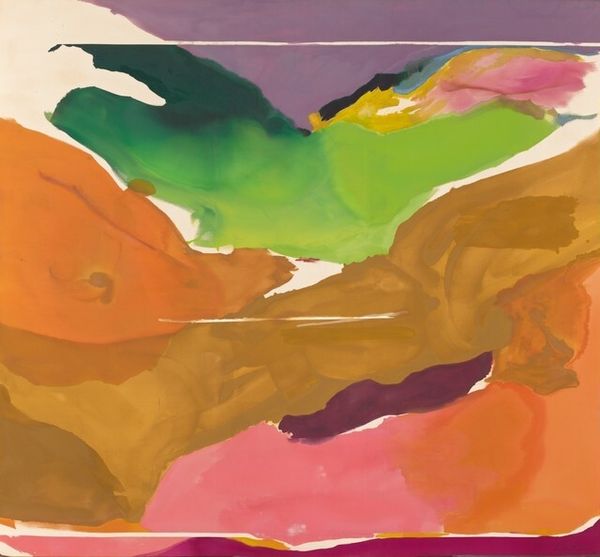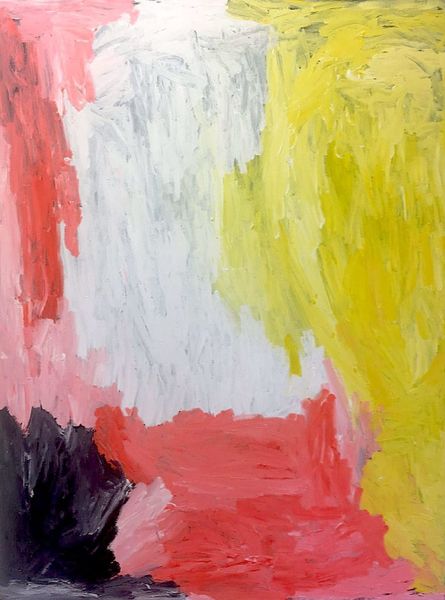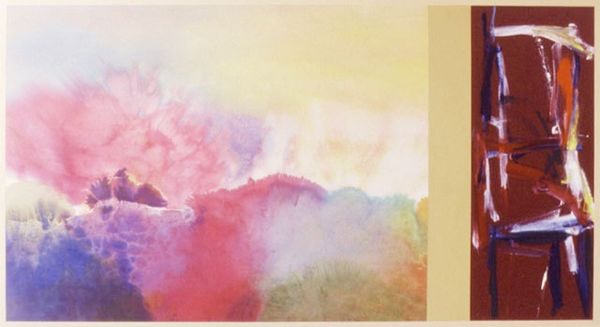
acrylic-paint, watercolor
#
abstract-expressionism
#
abstract expressionism
#
abstract painting
#
landscape
#
acrylic-paint
#
watercolor
#
acrylic on canvas
#
abstraction
#
watercolor
Copyright: Ronnie Landfield,Fair Use
Editor: So, this is Ronnie Landfield’s "Sailing to India," created in 1970 using acrylic and watercolor. I’m really struck by the soft, almost dreamy quality of the colors and how they blend together. It feels both abstract and kind of like a landscape. What do you see in this piece, especially given that it's labeled as Abstract Expressionism? Curator: What intrigues me most about this work is precisely what it reveals about the conditions of its production and reception. The interplay between acrylic and watercolor - relatively new industrial materials in the '70s - signifies a deliberate move away from the established traditions of oil painting. Landfield seems to be exploring new modes of expression afforded by technological advances in paint manufacturing, challenging the very notion of 'high' art through its materiality. Consider also, the role of consumerism in the art world at the time; how did the ready availability of these new mediums affect artistic practices and aesthetics? Editor: That's a fascinating point. I hadn't considered how the choice of materials speaks to a broader shift in artistic practices due to changes in manufacturing. Does the title "Sailing to India" suggest anything about global trade or perhaps a yearning for the exotic, considering the materials and production techniques used? Curator: Precisely! We can interpret the title in connection with the increased global interconnectedness and cultural exchanges characteristic of the era. What might Landfield be implying about the commodification of culture or perhaps even the social dynamics inherent in global trade, all hinted at through the material realities of paint and canvas? Think of the painting's journey: pigments sourced globally, processed industrially, applied to canvas stretched and primed. These seemingly innocuous materials carry within them an entire history of labor, exchange, and consumption. Editor: I never would have looked at this painting this way. It's amazing how the materials themselves can tell such a complex story. Curator: Absolutely. It encourages us to question established art historical narratives by prioritizing material realities and social contexts.
Comments
No comments
Be the first to comment and join the conversation on the ultimate creative platform.
